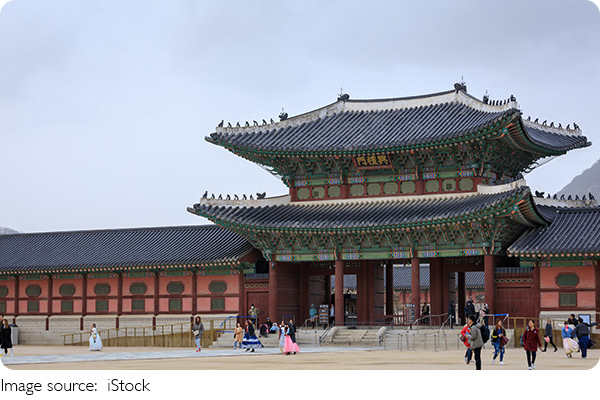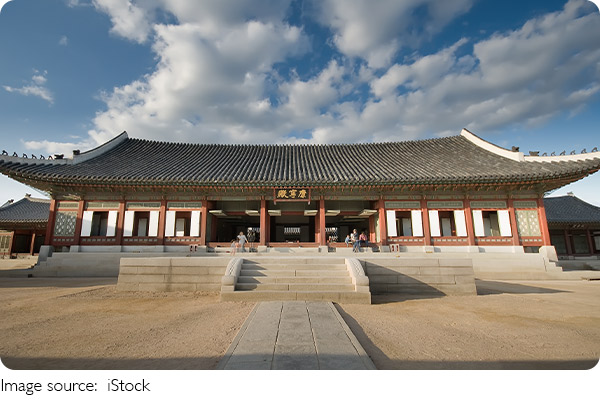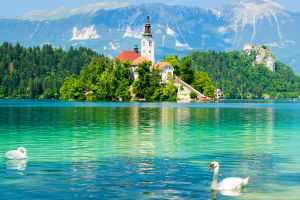Seoul's Iconic Palace

There's something almost cinematic about stepping into Gyeongbokgung Palace in the early morning. As the city hums just beyond its ancient stone walls, a deep calm settles under your feet.
But here's the thing: most travelers rush to take photos near the front gates or watch the ceremonial guard change, then leave without really walking the palace. That's a missed opportunity.
Gyeongbokgung isn't just a backdrop—it's a living map of Korean history, layered with symbols, hidden passages, and architectural choices that reveal more the slower you go. If you're planning to visit, give yourself at least two hours for a proper walk—and don't just follow the crowds.
Start at the Side, Not the Center
Most people enter through Gwanghwamun Gate, the grand main entrance. It's worth seeing, but here's a tip: if you arrive early (before 9:00 AM), use the Yeongchumun Gate on the east side instead. It's usually quieter, and from here you'll approach the palace diagonally, which gives you a much better feel for the layout and flow.
From this angle, your first stop is the Hyangwonjeong Pavilion, one of the most photogenic—and overlooked—spots. It sits quietly on a man-made pond with a wooden bridge leading to it. The symmetry here is intentional: it reflects the ideals of harmony and order that the Joseon Dynasty prized. You'll also notice it's elevated, slightly distanced from the main court, used historically for quiet retreats and royal reflection.
Find Meaning in the Details
Gyeongbokgung isn't flashy, but it's layered with meaning. What looks like just another courtyard often holds symbolic intent.
1. Geunjeongjeon Hall: This is the main throne hall, and while it can get crowded, pay attention to the small stone markers in the courtyard. They show the position of officials during royal ceremonies—ranked, measured, fixed. This isn't just a photo spot; it's a physical representation of hierarchy in Joseon society.
2. Gyeonghoeru Pavilion: Often mistaken as just a pretty lakeside structure, this was where the royal family hosted important banquets. Look closely at the 48 stone pillars—the number itself has ties to Korean numerology. And if you visit in the spring, cherry blossoms frame it naturally.
3. Chimneys in the Queen's Quarters: These aren't decorative. They were designed to circulate warmth through the ondol, the traditional floor heating system.
Practical Info You Should Know
1. Entry Fee:
General admission is ₩3,000 ($2.20 USD) for adults and ₩1,500 ($1.10 USD) for children.
If you wear a hanbok (traditional Korean attire), entry is free. Rental shops near the gate offer half-day rentals for around $10–$15 USD.
2. Opening Hours:
9:00 AM – 6:00 PM (closed on Tuesdays).
Last entry is one hour before closing, but arriving in the morning or around 4 PM offers the best lighting and fewer crowds.
3. Getting There:
Take Seoul Subway Line 3 to Gyeongbokgung Station, Exit 5. It's a direct underground connection to the palace grounds—super convenient even in bad weather.
4. Best Seasons:
• Autumn (late October–early November): Maple trees inside the palace turn fiery red and gold.
• Spring (late March–April): Blossoms frame rooftops and walkways, and temperatures are mild.
• Avoid mid-summer if you don't handle heat and humidity well.
Bonus: Pair It With a Short Walk to Bukchon
Once you've walked the palace thoroughly, don't leave just yet. From the north gate, take a 10-minute uphill walk to Bukchon Hanok Village. This area preserves traditional Korean homes, known as hanok, many of which now house cafés, art galleries, and workshops.
Tip: Don't rely solely on Online Maps here—the alleys twist unpredictably. Look for the numbered photo spot markers posted by the city. If you only follow the ones with crowds, you'll miss the quieter rooftops and artist studios deeper in the back streets.

What Not to Miss (But Easy to Overlook)
1. The National Folk Museum of Korea: Located inside the palace grounds. It's free with your palace ticket and offers a compact but smart overview of Korean daily life across centuries.
2. Secret Garden Tours: While not inside Gyeongbokgung (it's in nearby Changdeokgung), many visitors confuse the two. The secret garden tour must be booked in advance and is worth it for a separate day if you're a fan of landscape architecture.
Walk Like You're Listening
Gyeongbokgung doesn't shout for your attention. It whispers through tiled rooftops, echoing footsteps on stone, and quiet reflections on the pond. The more time you give it, the more it gives back. Don't treat it as just a stop between Myeongdong and Insadong.
So, if you've already been—what was your favorite corner of the palace? And if you're heading there soon, what are you most curious to discover? Let me know, and maybe your insight will guide another traveler's next slow walk.
-
 Lake Bled's Secret SideThis Fairytale Lake Has a Hidden Trail Most Tourists Miss—Here's Why It Matters!
Lake Bled's Secret SideThis Fairytale Lake Has a Hidden Trail Most Tourists Miss—Here's Why It Matters! -
 Lake Louise WondersDiscover the breathtaking beauty and year-round adventures of Lake Louise, the Canadian Rockies' stunning blue jewel.
Lake Louise WondersDiscover the breathtaking beauty and year-round adventures of Lake Louise, the Canadian Rockies' stunning blue jewel. -
 Sahara: Your First CallingTourists Flock Here for One Reason – The Sahara Like You've Never Seen Before!
Sahara: Your First CallingTourists Flock Here for One Reason – The Sahara Like You've Never Seen Before!